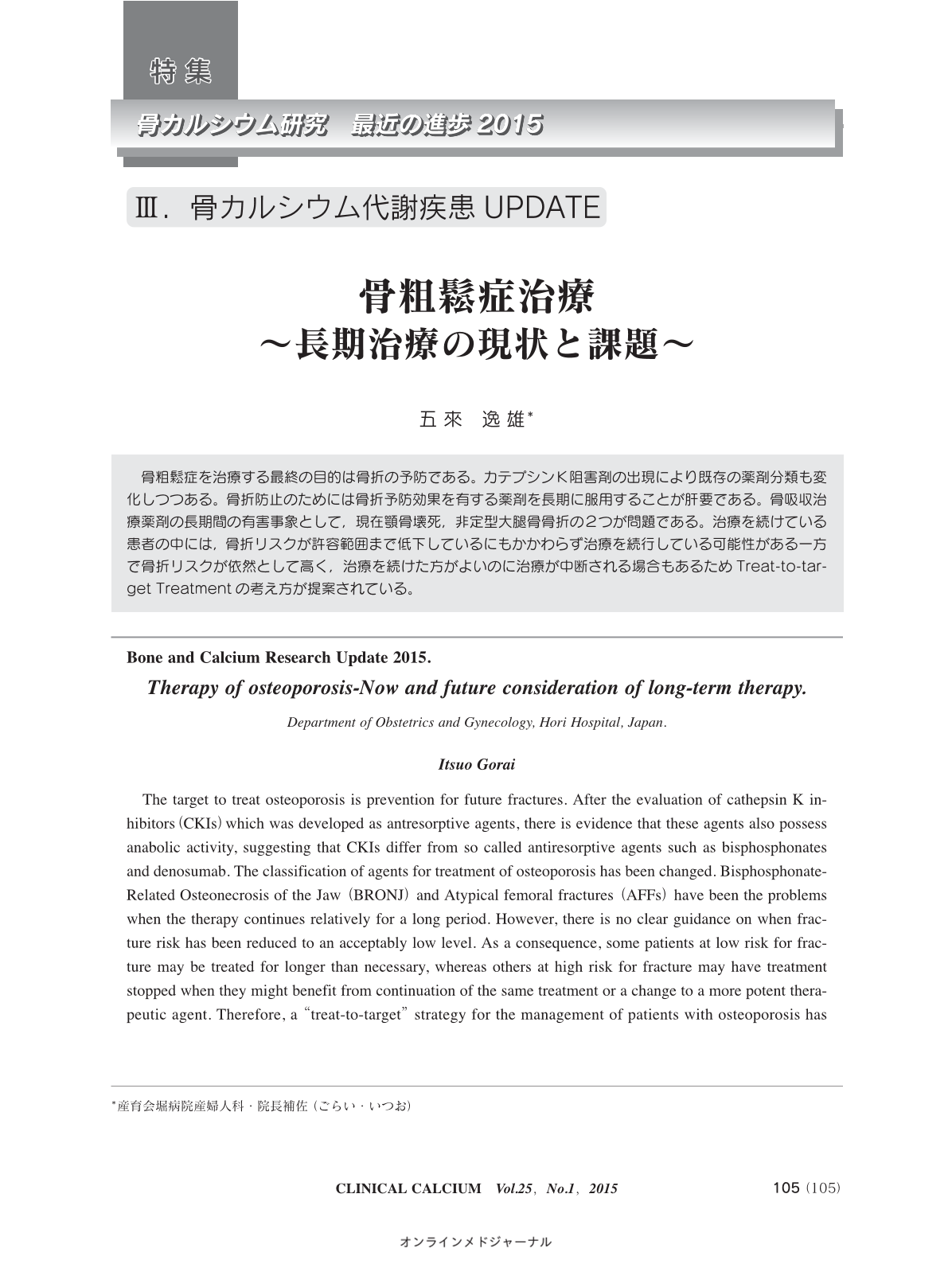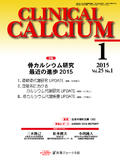Japanese
English
- 有料閲覧
- Abstract 文献概要
- 1ページ目 Look Inside
- 参考文献 Reference
骨粗鬆症を治療する最終の目的は骨折の予防である。カテプシンK阻害剤の出現により既存の薬剤分類も変化しつつある。骨折防止のためには骨折予防効果を有する薬剤を長期に服用することが肝要である。骨吸収治療薬剤の長期間の有害事象として,現在顎骨壊死,非定型大腿骨骨折の2つが問題である。治療を続けている患者の中には,骨折リスクが許容範囲まで低下しているにもかかわらず治療を続行している可能性がある一方で骨折リスクが依然として高く,治療を続けた方がよいのに治療が中断される場合もあるためTreat-to-target Treatmentの考え方が提案されている。
The target to treat osteoporosis is prevention for future fractures. After the evaluation of cathepsin K inhibitors(CKIs)which was developed as antresorptive agents, there is evidence that these agents also possess anabolic activity, suggesting that CKIs differ from so called antiresorptive agents such as bisphosphonates and denosumab. The classification of agents for treatment of osteoporosis has been changed. Bisphosphonate-Related Osteonecrosis of the Jaw(BRONJ)and Atypical femoral fractures(AFFs)have been the problems when the therapy continues relatively for a long period. However, there is no clear guidance on when fracture risk has been reduced to an acceptably low level. As a consequence, some patients at low risk for fracture may be treated for longer than necessary, whereas others at high risk for fracture may have treatment stopped when they might benefit from continuation of the same treatment or a change to a more potent therapeutic agent. Therefore, a “treat-to-target” strategy for the management of patients with osteoporosis has been developed to describe the potential clinical utility of evaluating changes bone density and bone turnover markers, and events of fractures.



